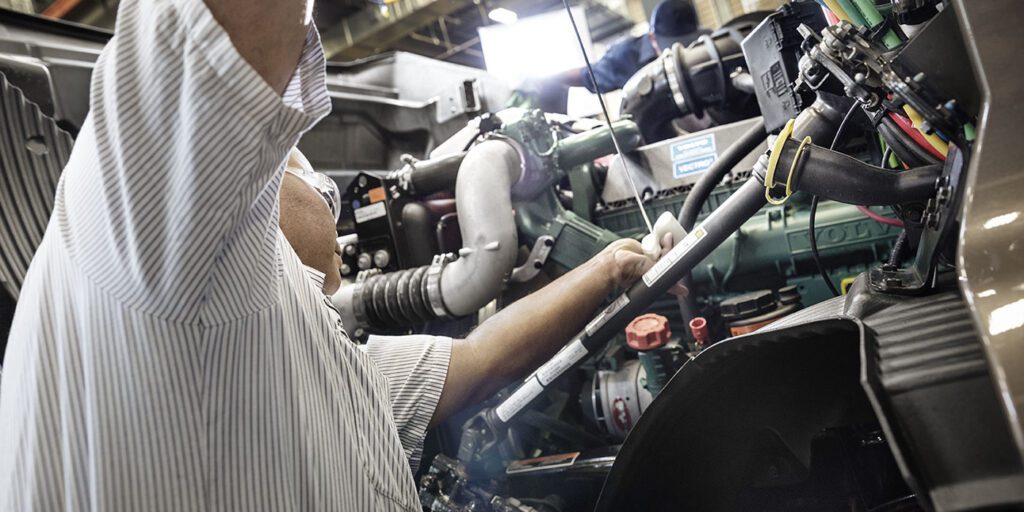A recent report from Fullbay regarding heavy-duty truck repair shops reveals a blend of challenges and hopeful insights as the industry deals with labor shortages, rising costs, and the changing role of artificial intelligence in managing operations. Patrick McKittrick, the CEO of Fullbay, shared these insights during the 2025 Annual Meeting & Transportation Technology Exhibition hosted in Nashville.
The findings, based on a survey of 950 shop owners and data analysis from over 3,500 heavy-duty truck repair shops, indicated that 56% of participants are optimistic about improvements in 2024 compared to 2023. Only 17% noted a slight decline, while just 3% indicated facing serious challenges. Although some uncertainty still lingers, particularly surrounding tariffs and economic changes, the general outlook signals stability for many operators.
Increase in Labor Rates and Technician Salaries
Labor costs are on the rise, prompting independent repair shops to frequently adjust their pricing structures. The report highlighted an average increase of $10 per hour from early 2023 to early 2024, with further increases anticipated as 2025 approaches. Nonetheless, many shops still conduct rate reviews only once a year, which could result in missed opportunities to keep pace with rising expenses.
Technician salaries also increased, with the average wage climbing from $27 per hour in 2023 to $29 per hour in 2024. The demand for skilled technicians remains robust, with projections indicating a 20% higher demand through 2028 than originally forecasted. A shortage of new entrants into the industry continues to exacerbate the competition for talent, thereby driving wages higher.
Regional Variations in Efficiency and Compensation
Efficiency levels among technicians differ considerably by region, with the Southeast achieving the highest efficiency rating at 117%. This trend is largely attributed to the flat-rate pay system, where technicians are compensated based on a predetermined amount of time allocated to each job instead of hourly wages. Conversely, hourly pay is more prevalent in the Midwest, Northeast, and West, often influenced by union contracts and local labor practices.
Challenges in Retaining Workforce
Retention of talent continues to be a significant challenge for repair shops. According to the report, 39% of those surveyed found hiring more difficult in 2024 compared to previous years, while 45% reported no change, and 16% noted an easier recruitment process.
Shops that have successfully recruited staff often offer competitive benefits, including tool allowances, paid vacation, health insurance, and flexible working conditions. Smaller shops may find it challenging to provide these benefits, but for those aspiring to grow, such advantages play a crucial role in attracting and retaining skilled technicians.
Rising Concerns About Fraud
An alarming trend identified in this year’s report is the increase in fraud-related incidents. About 35% of respondents indicated that they had faced fraudulent activities, such as disputed transactions from legitimate customers and stolen credit card charges for high-value components like tires.
In several instances, a new “customer” would place a large order for parts over the phone, only for the shop to later discover that the credit card used was stolen. While many shops manage to intercept most fraudulent transactions before they are processed, the report underscores the importance for businesses dealing with high-value inventory to stay alert and take necessary precautions.


